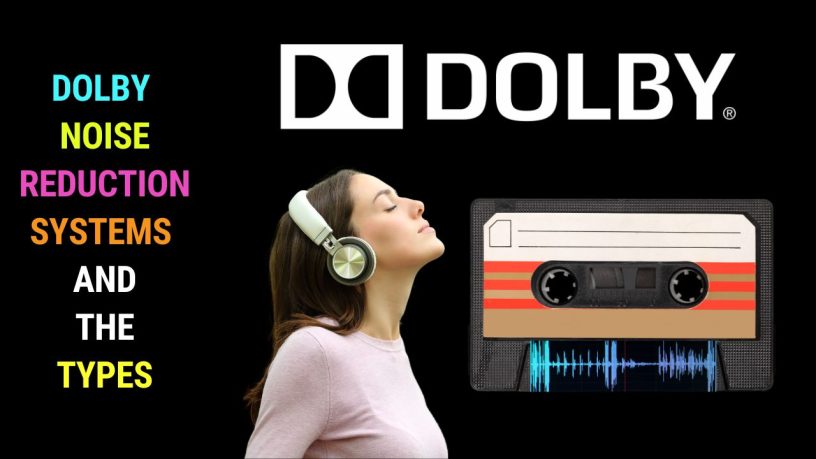Last updated on January 23rd, 2024 at 02:17 am
One major problem with recording audio to tape is the hissing noise that gets included.
To overcome the problem a noise reduction system is used.
One such system is the Dolby noise reduction system.
The Dolby noise reduction system performs two functions:
- Boosts the energy of audio signals
- Improves the signal-to-noise ratio of audio signals.
This applies to the high-frequency spectrum of audio signals.
The audio signal energy is primarily focused on the low-frequency area of the spectrum. In other words, frequency below 2kHz.
The higher frequency section of the audio signal that outputs quality and ‘feel’ usually has a lower energy level. Even the smallest volume of noise can affect its quality.
When a tape is played back, the signal-to-noise ratio is much lower in the higher-frequency parts than in the lower-frequency parts.
You can hear noise much more clearly in the higher-frequency parts. This is because the signal energy doesn’t do a good job of masking it.
How Does the Dolby Noise Reduction System Work?
The Dolby noise reduction system works by broadly focusing on and improving the low-energy sections of a high-frequency signal before the signal is even copied or recorded.
Then when the signal is recorded, it undergoes processing and encoding employing a pre-emphasis filter and dynamic range compression.
During playback, decoding of the audio signal takes place. This is done using both a de-emphasis filter and a decompression circuit.
To avoid any audio distortion, the encoder and decoder must work hand in hand.
Types of Dolby Noise Reduction Systems
Among the noise-reduction systems developed by Dolby are Dolby A, Dolby B and Dolby C.
How are they different from each other?
Their main difference is in the band number and pre-emphasis method,
Dolby A
The Dolby A noise reduction system was created for professional use.
With Dolby A the signal spectrum is split into 4 frequency bands.
Band 1 is called low-pass and handles 0 to 80 Hz.
Band 2 is called band-pass and covers 80 Hz to 3 kHz.
Band 3 is referred to as high-pass and covers frequencies above 3kHz.
Band 4 is also called high-pass and handles frequencies above 9 kHz.
Dolby A offers a 10 to 15 dB gain (maximum) for each band if the signal level drops 45 dB below the maximum recording level.
Dolby A is used with film prints with magnetic audio tracks. It is also employed in high-speed multi-track recording machines.
It was in popular use from 1975 to 1986. Dolby SR has taken over its place nowadays.
Dolby B
Dolby B is used for consumer audio systems. Two bands instead of four are used.
It offers a maximum boost of 10 dB if the signal level is 45 dB below the maximum recording level.
It is used in stereo decks.
Dolby C
Also used in consumer systems and two bands are employed.
A maximum boost of 20 dB is offered when the signal level is 45 dB below the maximum recording level.
Dolby C works well in non-Dolby machines compared to Dolby A and Dolby B.
Dolby SR
Dolby SR (spectral recording) is Dolby’s second professional noise reduction system after Dolby A.
The system is created to be used with multi-track equipment. It reduces noise up to 25 dB on the high-frequency side.
Dolby S
Dolby S is an improvement of Dolby C, aimed at consumers. It’s actually a simplified version of Dolby SR.
Dolby claims ordinary folks can’t differentiate between a Dolby S tape and an audio CD.
Video Guide
To refresh your understanding of the Dolby noise reduction system, watch the video below.
References
Advanced Digital Signal Processing and Noise Reduction
By Saeed V. Vaseghi



